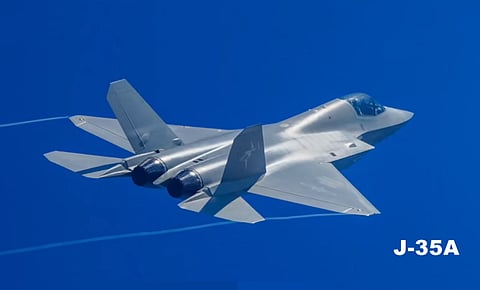

China has officially unveiled its newest stealth fighter, the J-35, after it is believed to have entered into production within the last year.
Over the weekend, Chinese state media — including China Central Television (CCTV) and outlets affiliated with the People’s Liberation Army (PLA) — released official footage showing the J-35 and its variant, the J-35A, under construction at Shenyang Aircraft Corporation hangars. The footage, tied to the 75th anniversary of the Shenyang facility, offered the first clear visuals of the aircraft’s airframe and confirmed its development and service entry in 2025.
This marks the first time Beijing has released state-sanctioned video of the J-35, signaling the aircraft’s transition from prototype to operational fighter. The J-35 is widely viewed as China’s rival to the U.S. F-35 stealth fighter, and analysts believe it officially entered service with the PLA Navy earlier this year.
The J-35 is China’s second operational stealth fighter, following the twin-engine J-20, which entered service in 2017. Over the weekend, state media also broadcast rare archival footage of the J-20’s first maiden test flight in 2011, further emphasizing China’s growing fifth-generation air power.
The J-35 first appeared in 2014 as an unofficial prototype known as the FC-31. It underwent years of testing and refinement before entering what analysts believe was low-rate production in 2023 or 2024. Footage circulating on social media earlier this year appeared to show the J-35 operating from Chinese naval facilities, though Beijing did not confirm its authenticity until the official reveal this weekend.
The J-35 is primarily designed for naval operations, including aircraft carrier deployment — a reflection of China’s continued focus on projecting power in its surrounding waters and the wider Indo-Pacific region. The rollout comes as the United States has now deployed all three variants of its F-35 stealth fighters across the Pacific, a move that began under the administration of President Donald Trump, who emphasized strategic focus on countering China’s military rise in the region.